The Harvest by Norwegian artist Per Kristian Stoveland is a notable edition of 400 generative artworks, which were minted following a Dutch auction starting at 10 ETH and descending until reaching its resting price. Check out The Harvest on Art Blocks for all the official info, especially Per’s poetic description!
Here are some of the minted artworks to get you in the mood, but be sure to read on to find out more about the inspirations, the creation process and the artist himself!
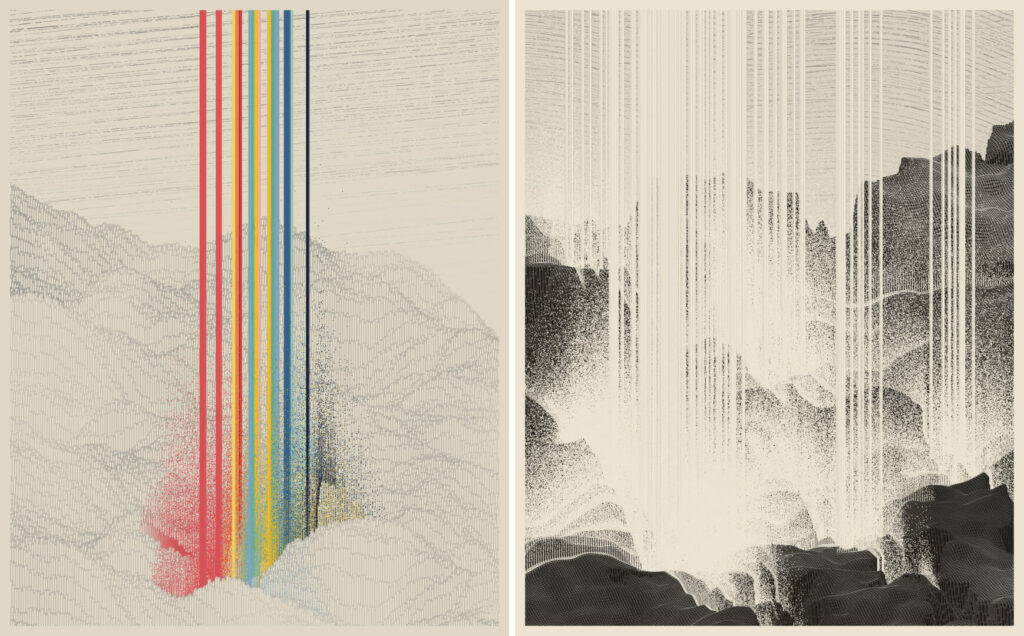

Inspirations
The Harvest began with experimentations around landscapes and with different techniques before evolving into the idea of beams striking the landscape. Before starting to develop The Harvest, the artist immersed himself in science fiction literature and audiobooks which fueled his fascination for cosmic physics and fantasy. An entity beyond our intelligence level emerged from this fascination – an entity that sends out minions to harvest sustenance from various worlds.
The Harvest has also been influenced by several artists. Hugh Ferris being one whose depiction of skyscrapers resonates with the monumental feeling he aims to capture. Michael Whelan’s illustrations also inspired him as they often feature vast landscapes similar to those found in Harvest.
Creating The Harvest
It’s rare that an artist takes you through their complete creation process, but Per shows us the evolution of the Harvest. It’s amazing to see how he went from the first simple idea to final output over the coming months.
Initially, he simply focused on using primitive shapes to form landscapes. He knew already that some element would draw attention from the landscape and blend into it simultaneously. He spent considerable time figuring out how to build the landscape generator by iterating various patterns and writing basic code.

Next came the beams. The challenge here was making them intersect naturally without overriding each other when they crossed paths.
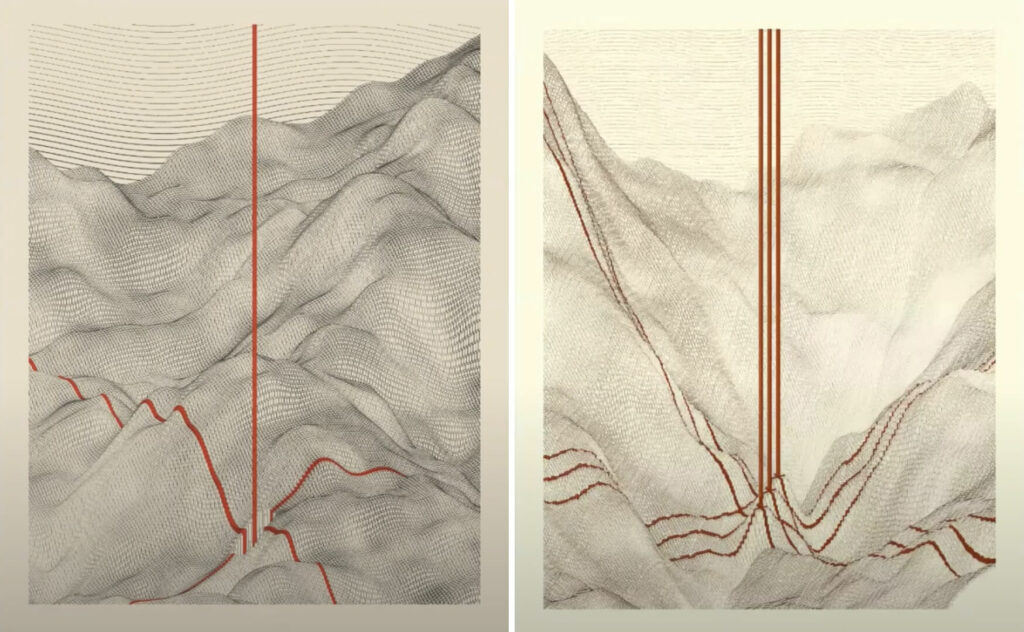
During this phase, there were several tests regarding colour selection as well as adding energy or “dust” to these beams.
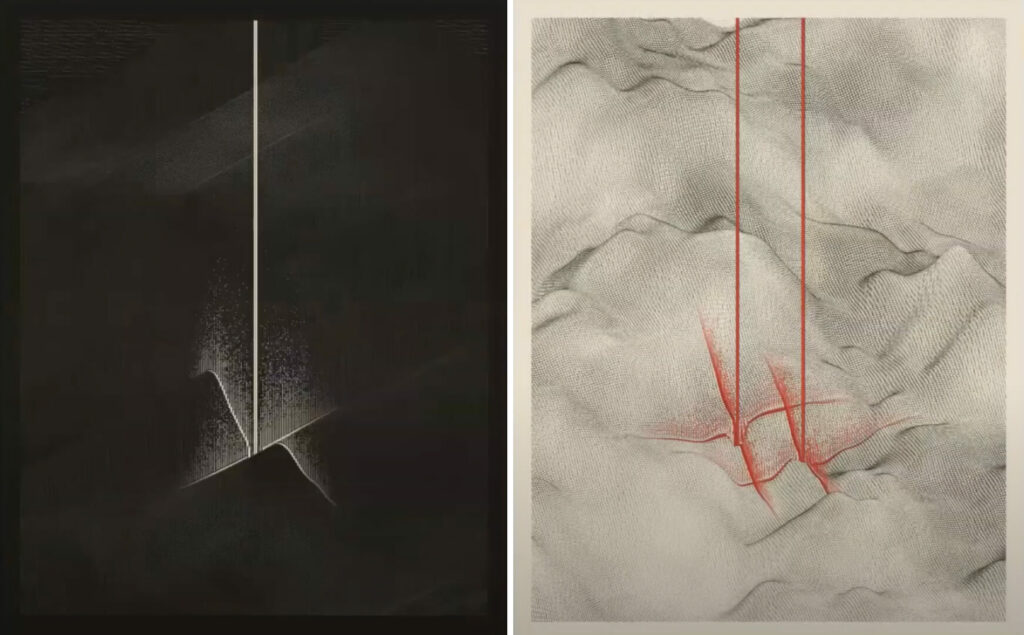
The next hurdle was dealing with intersections where one beam had greater reach than another; merging these points seamlessly took most of his effort but yielded satisfying results eventually.

As progress continued, focus shifted towards exploring varied colour palettes and working on different types of surfaces affecting how beams interacted with them.
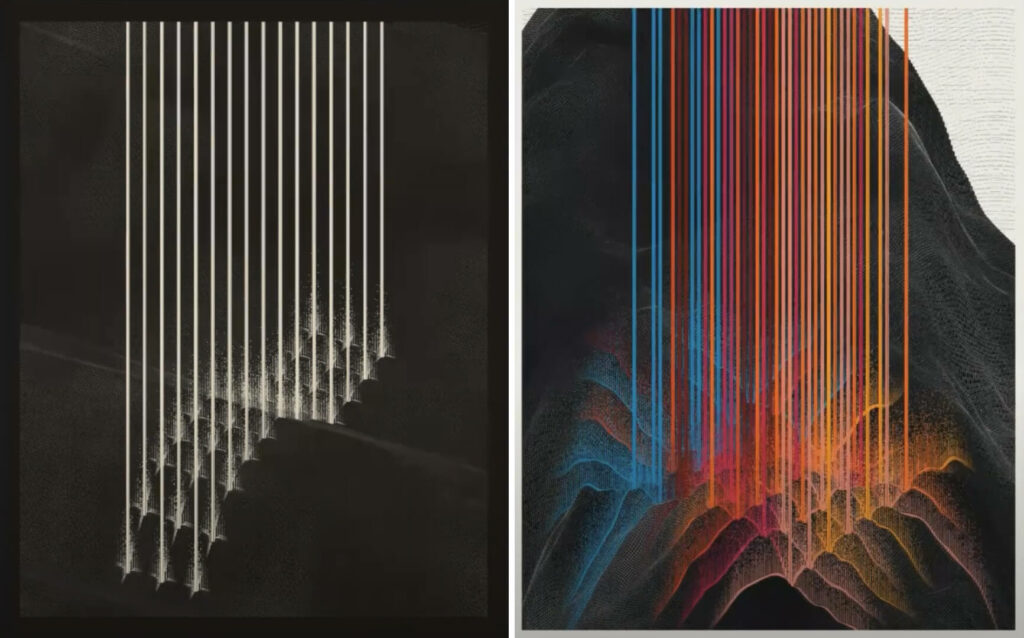
Now was the time to piece together all components into a cohesive algorithm capable of generating the desired output based on unique inputs.
Seeing all references coming together beautifully reminds us why every step matters in crafting intricate visuals just like this! It’s impressive to see how refined The Harvest has become over time through an iterative process, resulting in a complex and evocative final image.
During the interview, Per even demonstrates how the landscapes are rendered by setting up an actual renderer in the livestream. It’s fascinating to watch – here’s the full interview to dig in deeper:
About Per Kristian Stoveland
Per’s journey into generative art began like so many – by attending graphic design school and doing commercial design work. However, working within advertising made him question contributing towards consumerism and prompted discussions about starting a company focused more on creating memorable experiences than material things.
Per became a co-founder of Void, a design studio operating at the intersection of art, technology, design and architecture. They blend these aspects to create unique experiences such as art installations in galleries or permanent public art displays like reception areas of buildings.
In the above interview he walks us through two recent projects. First is an installation consisting about 4,700 individually addressable light diodes located downtown Oslo forming voluminous chandelier-like sculpture hanging inside acrylic tubes further enhanced by four 3D sensors detecting movements – triggering ripples within animated lights and giving a life-like effect overall.

The second project is called ‘Delta’, an outdoor public art piece. Here they embedded light rivers into concrete pavement reminiscent of Norwegian archipelago coasts. The amphitheater at the heart of this block was designed to invite people through it rather than around it. This project took approximately four years from inception.
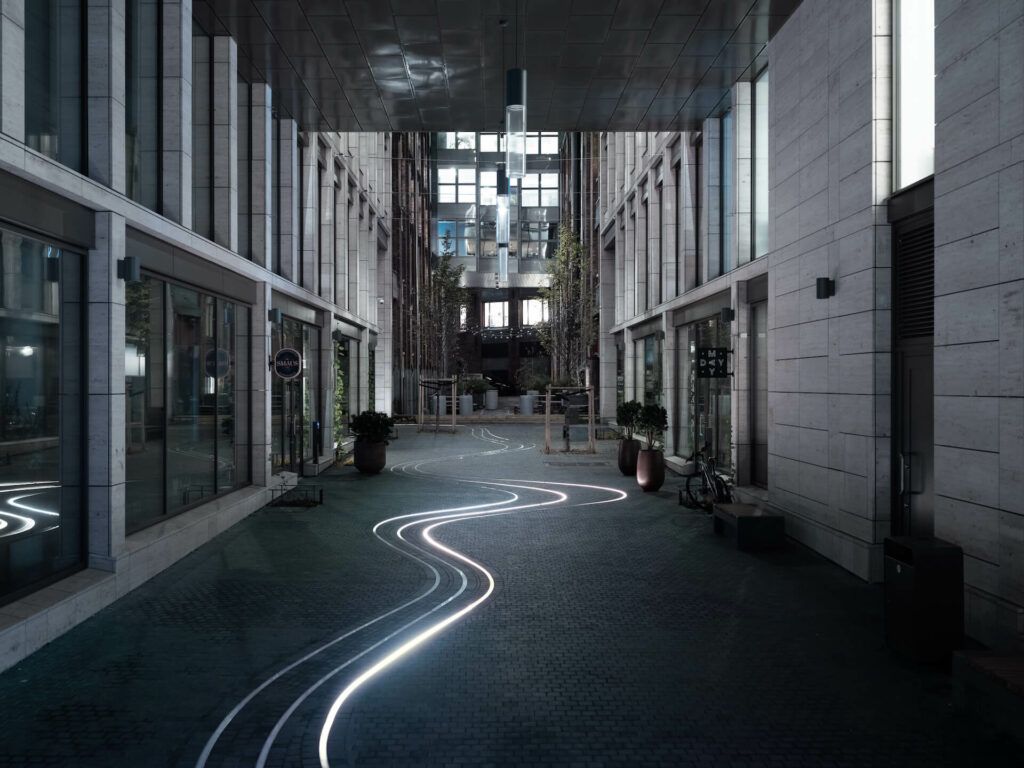
His exploration of generative art began around the 2000s using Flash but truly blossomed once NFTs entered the scene. Realizing how well generative art fit with token-based blockchain rekindled his interest in creating digital masterpieces beyond Void — his primary time-consuming project until then.
The NFT space also taught him that there can be an endpoint for artwork and drove home the realization that “art is never completed, it’s just abandoned.”
If you are interested to learn about Per, check out the Artist Spotlight that Proof did a while ago:
